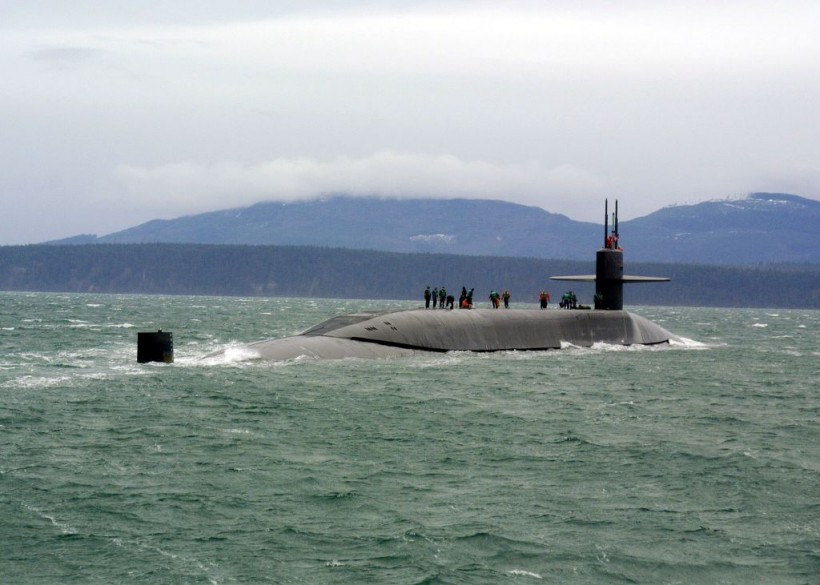
Several US defense outlets reported the US Navy recently revealed how it simultaneously surfaced at least three Ohio-class cruise missile submarines in the western Pacific and Indian Ocean waters in 2010 to allegedly "signal US displeasure over Chinese missile tests in the East China Sea."
According to the defense news outlet 19FortyFive, US officials were caught off guard after China successfully tested a high-altitude anti-ballistic missile system and Beijing did not inform any nation about it.
In response, the US sensed the behavior suggested an uptick in hostility and responded by surfacing three of its Ohio-class submarines at the same time.
Aftermath of the Incident
Since then, China has prioritized the modernization of its war machine, including the development of ballistic missiles. The most recent ballistic missile test the People's Liberation Army (PLA) made was just last June, bringing the tally of publicly announced land-based anti-ballistic missile tests to six.
Defense reporters and analysts wonder if a similar action could be done in the near future as Washington-Beijing relations freeze over.
Read Also: Xi Jinping Replaces China's Nuclear Force Generals After Foreign Minister's Mysterious Disappearance
How the US Carried Missiles on Subs
Like every other ship during World War II, submarines are powered by diesel engines, which proved to be noisy as sonar technology developed.
In the years after the war, the US began to find ways to modernize its submarine technology while implementing its growing missile capabilities in light of growing Soviet aggression during the recently-begun Cold War. The US Navy came up with its first nuclear-powered submarine, the USS Nautilus in the mid-1950s.
Prior to the production of the Nautilus, the Navy also designed the Regulus I missile, which represented the first sea-launched missile that could be fitted with a nuclear warhead.
However, the Regulus could only be launched if the submarine carrying it surfaced, and the Navy wondered if they could launch a missile while submerged.
Thus, the US Navy's ballistic missile submarine program commenced. Between 1959 and 1967, 41 ballistic missile subs were commissioned.
About the Ohio-Class Submarines
The current fleet of ballistic missile submarines, the Ohio-class, entered service in the 1980s. By the end of the Cold War, the first four Ohio-class submarines—Ohio, Florida, Michigan, and Georgia—were expected to retire by 2022. However, the 1994 Nuclear Posture Review determined that the US only needed 14 ballistic missile subs to provide the level of deterrence necessary.
With this in mind, the Navy transformed the first four Ohio-class subs into conventional land attack and special operations force (SOF) platforms. Instead of ballistic missiles that could accommodate nuclear warheads, they were fitted with Tomahawk cruise missiles. Two of the missile tubes were also converted to lockout chambers for Navy SEALs aboard them.
The converted subs also feature specialized operations mission centers, additional sensor and communication systems among other capabilities that enable them to function in shallower waters and still remain undetected.
Future Surfacings?
The Center for Security Policy added that the US Navy's Sixth Fleet made the location of the USS Georgia public off the coast of Cyprus a month before Russia's full-scale invasion of Ukraine. This was a rare act for the Navy, especially because Georgia remained to be a nuclear-capable ballistic missile submarine, unlike her four oldest sisters.
More recently, the USS Michigan arrived in Busan in South Korea last June in response to North Korea's resumption of missile tests.
This only suggested tensions were high enough for the US to want to send a reminder to its adversaries that such vessels could come up to their doorsteps suddenly and without any trace.
"Since tensions between Washington and Beijing have dramatically increased since 2010, could the Navy's fleet of SSGNs - a capability China does not possess - resurface?" 19FortyFive senior editor Maya Carlin wrote in her article.
Related Article: China Steps Up Pressure on US Over Taiwan Weapons Sales









